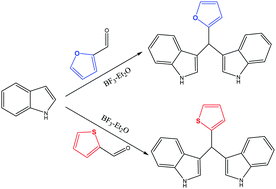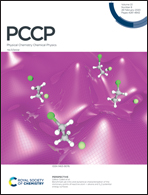Self-assembly of new O- and S-heterocycle-based protective layers for copper in acid solution†
Abstract
In order to explore the effects of the structures of organic molecules on their performance and develop high-efficiency self-assembly monolayers (SAMs), two heterocycle-based indole compounds, namely FYBI and TYBI, have been synthesized by a simple route. Herein, we show that FYBI and TYBI can effectively self-assemble on a copper surface and form strong anti-corrosive monolayers to protect copper in acid medium. The compositions, morphologies, and thicknesses of the SAMs have been investigated by XPS, FTIR, SEM and ellipsometry analyses. The optimal self-assembly conditions and inhibition performance of the SAMs with O- or S-heterocycles have been studied by electrochemical tests. According to the results, TYBI displays more powerful inhibition performance than FYBI. Furthermore, the high-resolution XPS and quantum calculation results reveal that the S-heterocycle indole (TYBI) can readily donate electrons to the empty d orbital of Cu and form more robust, hydrophobic, and anti-corrosive SAMs than the O-heterocycle indole (FYBI). The inhibited corrosion is achieved by inhibiting the generation of Cu2+. This systematic study on the performance of various heterocycle-based organic compounds gives a fresh perspective for forming SAMs with certain characteristics, such as anti-corrosion ability or super-hydrophobicity.



 Please wait while we load your content...
Please wait while we load your content...